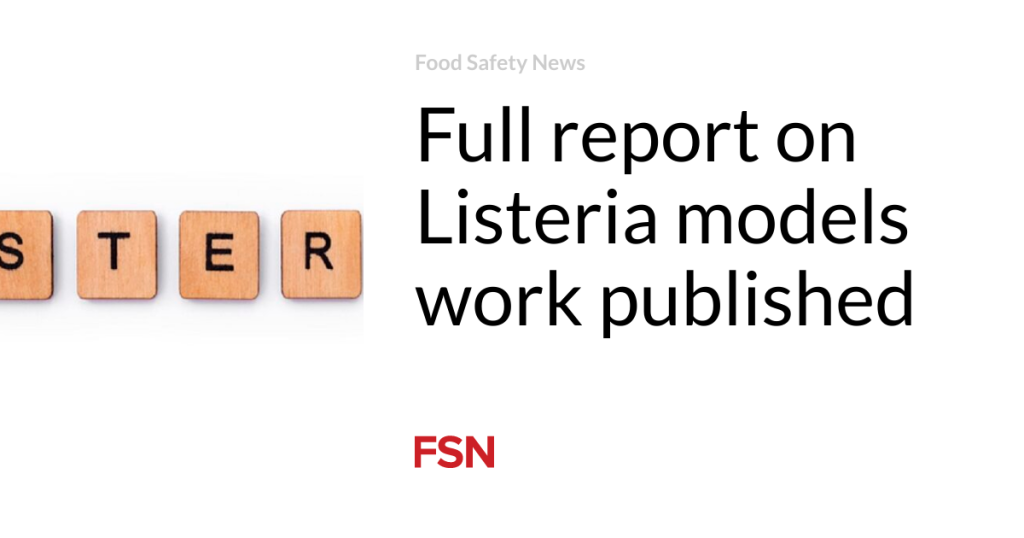More details have been shared about the process of developing models to improve knowledge about the risks associated with Listeria monocytogenes.
The Food and Agriculture Organization of the United Nations (FAO) and the World Health Organization (WHO) revised the 2004 Listeria models.
The Joint FAO/WHO Expert Meeting on Microbiological Risk Assessment (JEMRA) in Rome in October 2022 started developing risk assessment models for Listeria monocytogenes for lettuce, cantaloupe, frozen vegetables, and ready to eat (RTE) fish, covering the stages from primary production to consumption. The full report of this meeting has recently been published.
Food commodities were cut and packaged leafy greens, whole leafy greens, ready-to-eat diced cantaloupe, whole cantaloupe, smoked fish and gravad fish and non-RTE blanched frozen vegetables.
Model progress
At a second meeting, held in 2023, risk assessment models were evaluated to characterize the risk of listeriosis because of consumption of diced cantaloupe, frozen vegetables, and cold-smoked RTE fish. The lettuce model was not ready for evaluation.
Models needed to be programmed, tested, and reviewed. The review verified if they were flexible enough to run different scenarios and incorporate new data to account for the national, regional, and international context.
Studies on quantitative risk assessment models for Listeria monocytogenes in different products have been published in a special edition of the journal Foods.
Based on the report of the first meeting, experts reviewed literature on risk assessment models, and discussed the model approach and exposure assessment, including hazard characterization and dose-response data as well as current knowledge on the genomic data.
Scientists said the primary production (pre-harvest) module should enable assessment of the introduction of the pathogen in raw materials, taking into account the effects of season, agrifood practices, and climate change. The possibility of cross-contamination from production to consumption should also be considered.
Commodity specific points
For leafy greens, production activities including irrigation, fertilization, and other on farm management practices have an impact on the occurrence of Listeria monocytogenes. Stages to be represented in the risk assessment include growth of leafy greens, harvesting, cooling, washing, sanitizing, cutting, packaging, transportation steps, display at retail, and consumer practices.
The model should be able to measure effectiveness of the prevention of contamination by soil/irrigation water, the efficacy of washing with or without sanitizers, the use of good hygiene practices during processing, the efficacy of sampling schemes, and the impact of different consumer practices related to handling and storage.
For frozen vegetables, the main factors driving risk have been identified in the stages of processing and consumer handling. Relevant stages in the risk assessment include: cleaning, washing, blanching, freezing, packaging, display at retail, consumer practices such as defrosting and cooking, as well as practices relating to non-intended use.
Relevant stages for cantaloupe are the growing in fields, harvesting, cooling, washing, sanitizing, dicing, display at retail, consumer practices, and transportation steps. Flexibility to account for the impact of farming practices, extreme weather events, climate change, and diverse market practices should be included.
Important stages for RTE seafood are growth of fish, harvesting, evisceration and head cutting, filleting, different smoking steps, gravad fish steps, freezing, slicing, packaging, multiple transportation steps, retail and consumer handling.
Cross-contamination should be considered because RTE fish production can involve several steps, sometimes in different facilities in different countries. Whole genome sequencing/strain typing data, could be used to assess dominant strains at different production stages to inform cross-contamination modules.
Experts said there was a need for additional data on Listeria monocytogenes in the food chain to better inform occurrence, virulence and dose response, so that a risk assessment for different sequence types (ST) or clonal complexes (CC) of Listeria can be performed.
(To sign up for a free subscription to Food Safety News, click here.)








